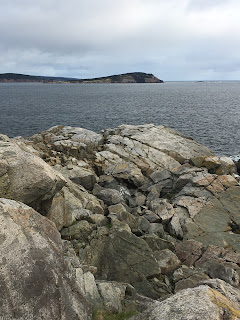On our recent roadtrip to New England and Nova Scotia, we crossed the Salmon River in New York that was clearly flowing into Lake Ontario; the river rises on the Tug Hill Plateau east of the Lake. Having always associated salmon with marine environments, I was intrigued and did some research.
In the Northeast U.S. and Eastern Canada, landlocked salmon are a subspecies of the Atlantic Salmon, having become trapped in freshwater lakes during the Pleistocene, when glaciers altered the regional hydrology. Landlocked Atlantic Salmon were first discovered in Maine but native populations were later found in Lake Ontario and Lake Champlain as well. Unlike marine salmon species, these salmon spend most of their lives in freshwater lakes, ascending feeder streams to spawn. The native populations dwindled over time (due to pollution, dams, overfishing and other human influences) but have been sustained through stocking programs.
Landlocked salmon are also found in the Pacific Northwest, where similar geologic events likely played a role in their evolution and where fisheries now introduce them into freshwater ecosystems.



















